
Yeovil is a town and civil parish in Somerset, England. The population of Yeovil at the last census (2021) was 49,698. It is close to Somerset's southern border with Dorset, 126 miles (203 km) west of London, 41.8 miles (67.3 km) south of Bristol, 6 miles (9.7 km) west of Sherborne and 27.6 miles (44.4 km) east of Taunton. The aircraft and defence industries which developed in the 20th century made it a target for bombing in the Second World War; they are still major employers. Yeovil Country Park, which includes Ninesprings, is one of several open spaces with educational, cultural and sporting facilities. Religious sites include the 14th-century Church of St John the Baptist. The town is on the A30 and A37 roads and has two railway stations.
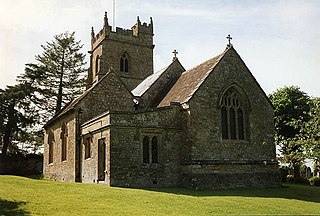
South Cadbury is a village and former civil parish, now in the parish of South Cadbury and Sutton Montis, in the Somerset district of the ceremonial county of Somerset, England. The parish includes the village of Sutton Montis.
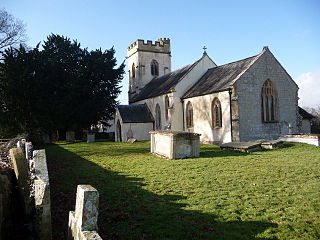
Thornfalcon is a village and civil parish in Somerset, England, situated 4 miles (6.4 km) east of Taunton. The village has a population of 119. The parish includes the hamlet of Ash. The name comes from Thorn, and the personal name Fagun which was the Norman surname of Sir Gilbert of Thorn, whose family were lords of the manor until the 14th century.

Chilton Cantelo is a village and parish in Somerset, England, situated on the River Yeo 5 miles (8 km) north of Yeovil and 4 miles (6 km) east of Ilchester in the South Somerset district. The village has a population of 445. The parish also includes the village of Ashington.

Closworth is a village and civil parish in Somerset, England, 5 miles (8.0 km) south of Yeovil in the South Somerset district, on the border with Dorset. The village has a population of 220.

Combe St Nicholas is a village and parish in Somerset, England, situated 2 miles (3.2 km) northwest of Chard and 10 miles (16 km) from Taunton in the South Somerset district on the edge of the Blackdown Hills Area of Outstanding Natural Beauty. The parish, which includes Wadeford and Scrapton, has a population of 1,373.
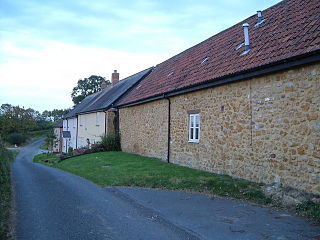
Knowle St Giles is a village and civil parish in the South Somerset district of Somerset, England, situated on the River Isle 2 miles (3 km) south of Ilminster and 2.5 miles (4 km) north east of Chard. The village has a population of 244.
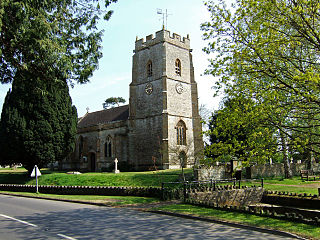
Marston Magna is a village and civil parish in Somerset, England, situated 5 miles (8.0 km) north of Yeovil in the South Somerset district. The village has a population of 523.
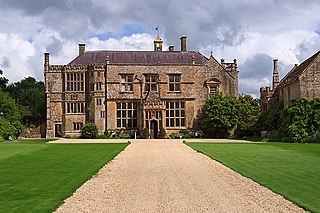
Brympton d'Evercy, a grade I listed manor house near Yeovil in the county of Somerset, England, has been called the most beautiful in England. In 1927 the British magazine Country Life devoted three articles to it, in which Christopher Hussey, near the start of a 50-year career as an architectural authority, termed it "the one which created the greatest impression and summarises so exquisitely English country life qualities." His articles remain the only detailed account of the house, which has belonged to six families: the D'Evercys, Stourtons, Sydenhams, Fanes, Weeks (1992–2008), and Glossops.

Withypool is a small village and former civil parish, now in the parish of Withypool and Hawkridge, in the Somerset district, in the ceremonial county of Somerset, England, near the centre of Exmoor National Park and close to the border with Devon. The word Withy means "willow". The parish of Withypool and Hawkridge, covers 3,097 hectares, includes the village of Hawkridge and has a population around 201.

Tintinhull is a village and civil parish near Yeovil, 2.5 miles (4 km) south west of Ilchester, in Somerset, England. The village is close to the A303. It is on the Fosse Way.

Tatworth is a village 2 miles (3 km) south of Chard in the South Somerset district of the county of Somerset, England. It is within Tatworth and Forton civil parish, and the electoral ward of the same name.

Whitelackington is a village and civil parish on the A303 one mile north east of Ilminster, in Somerset, England. The parish includes Dillington Park and the hamlets of Atherstone and Ashwell.
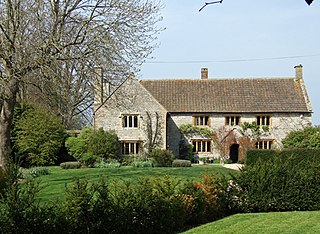
Rimpton is a village and civil parish 5 miles (8 km) north-west of Sherborne, and 6 miles (10 km) north-east of Yeovil on a tributary of the River Parret in the South Somerset district of Somerset, England.

North Barrow is a village and civil parish 8 miles (13 km) to the north-east of Ilchester in the South Somerset district of Somerset, England.

Stawell is a village and civil parish 4.5 miles (7 km) north-east of Bridgwater, and 2 miles (3 km) north-west of Moorlinch, in Somerset, England. The civil parish includes the village of Sutton Mallet.
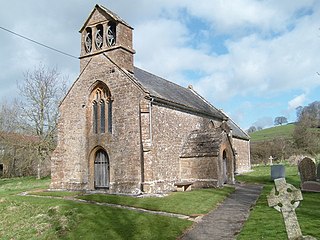
Stocklinch is a village and civil parish 3.5 miles (6 km) north-east of Ilminster in the South Somerset district of Somerset, England.

The Church of St Andrew in Brympton, Somerset, England, dates from the 13th century and has been designated as a Grade I listed building.
The Hundred of Stone is one of the 40 historical hundreds in the ceremonial county of Somerset, England, dating from sometime before the Norman conquest during the Anglo-Saxon era. Each hundred had a fyrd as its local defence force, and a court responsible for the maintenance of the frankpledge system. They also formed a unit for the collection of taxes. The hundred court's role was described in the Dooms (laws) of King Edgar. The name of the hundred was normally that of its meeting-place.
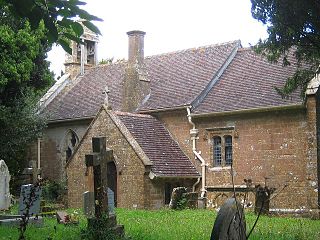
The Church of St Andrew in Thorne Coffin, Somerset, England, was built in the 14th century. It is a Grade II* listed building.





















